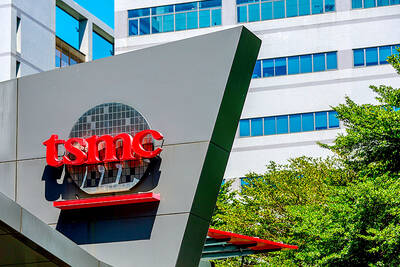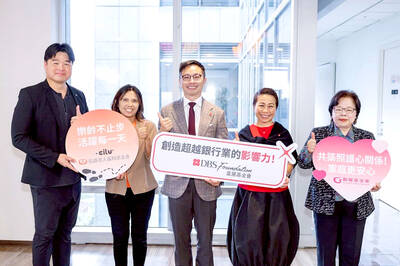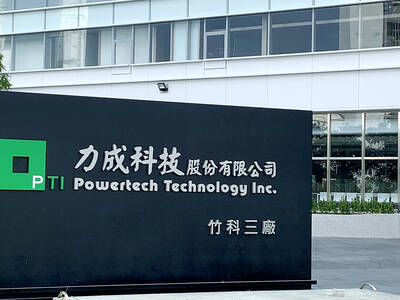The nation’s machine tool exports declined slightly in the first two months of the year, down by 1.2 percent from a year ago, although exports to China rebounded, the latest industrial data showed.
Exports for the first two months of the year dropped to US$479.47 million, down from US$485.35 million a year ago, according to data compiled by the Taiwan Machine Tool and Accessory Builders’ Association (TMBA).
Exports to China, the sector’s largest export destination, grew 2.9 percent during that period US$136.34 million from the US$132.52 million reached in the same period last year, data showed.
Although machine tool buyers in China did not replenish their inventory in January before the Lunar New Year, they significantly increased their purchases last month after the long holiday, association secretary-general Carl Huang (黃建中) said by telephone yesterday.
Exports to China increased 26.3 percent to US$76.1 million last month from US$60.23 million in January, the association’s data showed.
Last month’s figure was 76.9 percent higher than the US$43.01 million reached a year ago, the data showed.
Many Chinese machine tool buyers had problems acquiring funds to make purchases, which hurt a lot of Chinese suppliers, but Taiwanese suppliers were relatively unaffected, Huang said.
“The lack of funds in China affected the demand of low-level machine tools most severely, while Taiwanese machine toolmakers focus mostly on middle-level tools,” he said.
However, exports to the US and Thailand, the sector’s second and third-largest export destinations respectively, declined in the first two months of the year.
Exports to the US dropped 18.9 percent to US$53.68 million from US$66.17 million a year ago, the association’s data showed.
Machine tool demand in the US was low because of a lack of workers in the manufacturing sector, Huang said.
Exports to Thailand were down 26.9 percent to US$27.11 million from US$37.08 million a year ago, the data showed.
“Southeast Asia is the production base of many Japanese enterprises, and the nation’s machine tool exports to the region were significantly affected by the depreciation of the yen,” Huang said.
Exports to Turkey, the sector’s fourth-largest destination, surged 8.9 percent to US$24.82 million from US$22.79 million last year, while exports to Germany, the fifth-largest destination, grew 35 percent to US$21.2 million from US$15.71 million a year ago, the data showed.
Huang said the economic situation in Europe is improving, and Germany is the largest hub for Taiwanese machine tools to enter the region for distribution to other European countries.
Machine tool exports next month are expected to remain as flat as this month, while next quarter is likely to see a sequential increase based on orders received, Huang said.

Taiwan Semiconductor Manufacturing Co (TSMC, 台積電) has secured three construction permits for its plan to build a state-of-the-art A14 wafer fab in Taichung, and is likely to start construction soon, the Central Taiwan Science Park Bureau said yesterday. Speaking with CNA, Wang Chun-chieh (王俊傑), deputy director general of the science park bureau, said the world’s largest contract chipmaker has received three construction permits — one to build a fab to roll out sophisticated chips, another to build a central utility plant to provide water and electricity for the facility and the other to build three office buildings. With the three permits, TSMC

The DBS Foundation yesterday announced the launch of two flagship programs, “Silver Motion” and “Happier Caregiver, Healthier Seniors,” in partnership with CCILU Ltd, Hondao Senior Citizens’ Welfare Foundation and the Garden of Hope Foundation to help Taiwan face the challenges of a rapidly aging population. The foundation said it would invest S$4.91 million (US$3.8 million) over three years to foster inclusion and resilience in an aging society. “Aging may bring challenges, but it also brings opportunities. With many Asian markets rapidly becoming super-aged, the DBS Foundation is working with a regional ecosystem of like-minded partners across the private, public and people sectors

BREAKTHROUGH TECH: Powertech expects its fan-out PLP system to become mainstream, saying it can offer three-times greater production throughput Chip packaging service provider Powertech Technology Inc (力成科技) plans to more than double its capital expenditures next year to more than NT$40 billion (US$1.31 billion) as demand for its new panel-level packaging (PLP) technology, primarily used in chips for artificial intelligence (AI) applications, has greatly exceeded what it can supply. A significant portion of the budget, about US$1 billion, would be earmarked for fan-out PLP technology, Powertech told investors yesterday. Its heavy investment in fan-out PLP technology over the past 10 years is expected to bear fruit in 2027 after the technology enters volume production, it said, adding that the tech would

RUN IT BACK: A succesful first project working with hyperscalers to design chips encouraged MediaTek to start a second project, aiming to hit stride in 2028 MediaTek Inc (聯發科), the world’s biggest smartphone chip supplier, yesterday said it is engaging a second hyperscaler to help design artificial intelligence (AI) accelerators used in data centers following a similar project expected to generate revenue streams soon. The first AI accelerator project is to bring in US$1 billion revenue next year and several billion US dollars more in 2027, MediaTek chief executive officer Rick Tsai (蔡力行) told a virtual investor conference yesterday. The second AI accelerator project is expected to contribute to revenue beginning in 2028, Tsai said. MediaTek yesterday raised its revenue forecast for the global AI accelerator used